Szczecin 2010-01-11
Airport in Goleniów near Szczecin.
Geographic coordinates: 53.584N 14.902E.
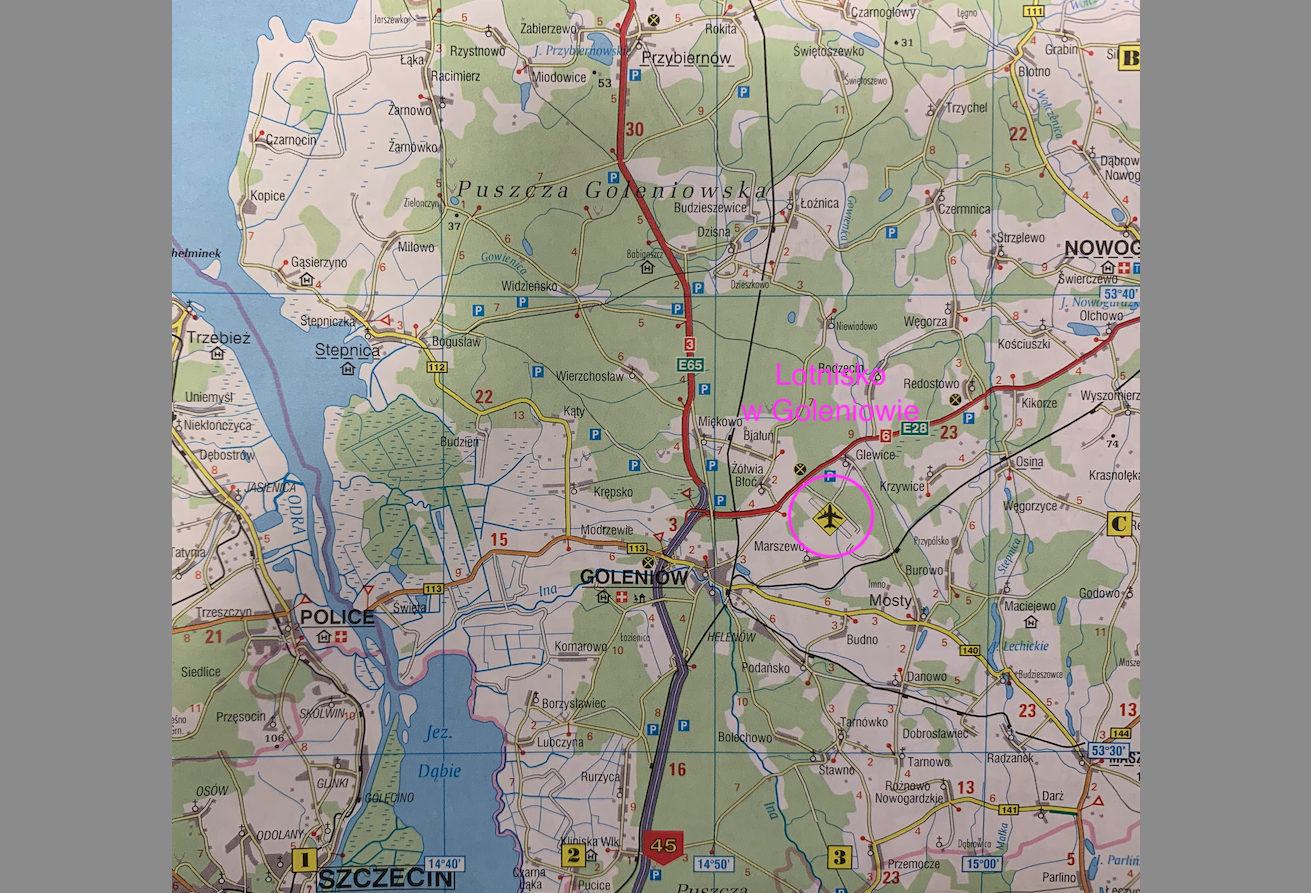
History of the City of Goleniów and the surrounding area.
The oldest traces of settlement in Goleniów date back to the Stone Age, i.e. 4,200 - 3,500 years BC, when the first non-nomadic peoples settled here. They were engaged in agriculture and fishing. Then the Lusatian culture appeared here, falling on the Bronze Age and the beginning of the Iron Age (1,200 - 400 BC). Based on the large number of finds, we can establish that there was a continuity of settlement here from the period of the Linear Pottery culture until the early Middle Ages. Therefore, another certainty regarding these areas is that they were continuously inhabited by the Pomeranian Tribe, which, however, was not able to create its own statehood. Over the centuries, it had to succumb to intrusive Germanization, although more often it gravitated towards the Crown of the Republic of Poland, which always gave much greater freedom and tolerance.
For the first time, the name Goleniów, or rather Pomeranian Gólnowó (Golinog), is mentioned in documents written in 1220. The name itself could mean golina, i.e. a settlement located in a treeless place, a clearing, or it could come from the old Slavic word for a forest, gola. Subsequent records of the settlement come from 1248 (Golenoge) and 1255 (Golnowe).
Archaeological research shows that in the 10th century, the settlement was of the pile type. It was located in a bend of the Ina River, and its people supplied honey from wild beehives and fish to the duke's court, and produced tar and tar. Next to this settlement there was a small hillfort, probably a watchtower. Trade developed in Goleniów. Important trade routes ran through here; land and water. In view of the constant development of the center, the Pomeranian duke Barnim I granted the settlement on the Ina River in 1268 a location under western law. In addition to numerous privileges such as; customs exemptions throughout the Duchy of Szczecin, the right to sail on the Ina without any restrictions, own self-government and others. The new town received 120 lans of arable land, 30 lans of forests and meadows reaching Roztoka Odrzańska. The then appointed City Council, i.e. the Local Government, took over most of the city's affairs in the field of judicial, financial, defense and economic activity. In order to confirm the identity of the documents issued by the local government, the city and its location were granted the right to have their own emblem placed on the city seal, from which it went directly to the coat of arms. One of the first seals of Goleniów, preserved to this day, comes from the period of the town's foundation. It shows a boat standing on the water with a bowsprit and a hinged rudder turned with its bow to the right, from which instead of a mast grows a spreading leafy tree resembling an oak, on top of which a Griffin can be seen striding to the right. This coat of arms underwent minor changes. But in the 18th century, for unknown reasons, the coat of arms was completely changed. In addition, it is not known what it is supposed to be associated with. It now represents two golden crescents turned away from each other and 4 stars. All on a blue background.
Goleniów quickly became rich on trade in grain and forest products. Already in 1368, Goleniów became a member of the Hanseatic League. He took an active part in the trade of goods in the Baltic countries. The largest sacral and secular buildings, especially defensive ones, were built in the 14th and 15th centuries. In 1386, Goleniów received the privilege of minting its own coin called the white groschen of Goleniów. In addition to trade, crafts developed in Goleniów.
Since the 16th century, life has been harder for the inhabitants. The era of rapid development has come to an end. In 1529, the city was hit by a devastating fire. The population was decimated four times in two centuries in fires and epidemics. But the main reason for slowing down the development of the city were the wars launched from the west and north. In the 17th century, the devastating Thirty Years' War swept across Goleniów, as well as throughout Western Pomerania. The treaty ending the war divided Western Pomerania between Sweden and Brandenburg. The Peace of Westphalia in 1648 granted the city to Sweden, which ruled it until 1679, when the Swedes sold Goleniów for 50,000. Brandenburg thalers. Four years later, the Swedes returned here, who withdrew only in 1720, under the Treaty of Stockholm, ending the Northern War. Goleniów was taken over by the Prussians, who brought their troops and civil authorities here. Warfare and looting broke Goleniów's economy. Shipping and crafts declined.
A new period in the city's history began. The inhabitants started to rebuild it, making fundamental changes in its spatial layout. Outside the walls, two suburbs were built, hospitals, a city scale, a town hall, and a school were built. The granary on the Ina River, preserved to this day, also dates from this period. The city's central location and huge forest areas contributed to the development of industry, mainly furniture, at the beginning of the 20th century.
The First and Second World Wars spared Goleniów for a while. Until the Soviet front arrived here in 1945. On March 7, 1945, Goleniów was captured by the Red Army. During the fighting for the city, the church of St. Catherine, the town hall was completely burnt down, the Old Town suffered severely. Goleniów was destroyed in about 65%, and only ruins remained from the city centre.
Pursuant to supranational treaties, Goleniów with the Szczecin Land fell to Poland. Polish settlers deported from the Borderlands of the Republic of Poland, now occupied by the Soviet army, began to arrive here. But if we take into account the Soviet soldiers left in the Szczecin region, they were the most numerous ethnic group here, located in military units after forests and towns that were not on the maps.
An important date in the post-war Polish history of the city was 1954, when Goleniów became the capital of the poviat, which was a formal act, as it had long been an independent center. New production plants, schools and kindergartens, new housing estates, sports, recreation and cultural facilities were built and existing ones developed, monuments were restored, trade and services developed, a new railway station and airport were built. Currently, Goleniów, thanks to the activity of its inhabitants, is one of the most dynamically developing centers in the West Pomeranian Voivodeship.
The most important date in the recent history of the City of Goleniów was the visit of the Polish Pope, Saint John Paul II, on June 11, 1987 at the Goleniów Airport. This visit was related to the third pilgrimage of the Polish Pope to his homeland, from June 8, 1987 to June 14, 1987. At 10:00, the Yakovlev Yak-40 plane, with the distinguished guest, landed at the airport in Goleniów. The Holy Father was welcomed by the Ordinary of the Szczecin-Kamień Diocese, Bishop Kazimierz Majdański, and the authorities of Szczecin. After the welcome, the distinguished guest flew by Mil Mi-8 helicopter to the airport in Dąbie. Then the "Papa mobile" car went to Jasna Błonia in Szczecin. After the ceremonies and celebrations in Szczecin, the Holy Father returned at 5:15 pm to Dąbie Airport. Then by Mi-8 helicopter to Goleniów Airport. Stanisław Malec, the Governor of Szczecin, bid farewell to the Guest on the tarmac. Here were the precious words of John Paul II, repeated many times: "Take care of people, serve the Szczecin Land, because it is our great treasure." The Yakovlev Yak-40 plane with John Paul II and the accompanying retinue went to Gdynia.
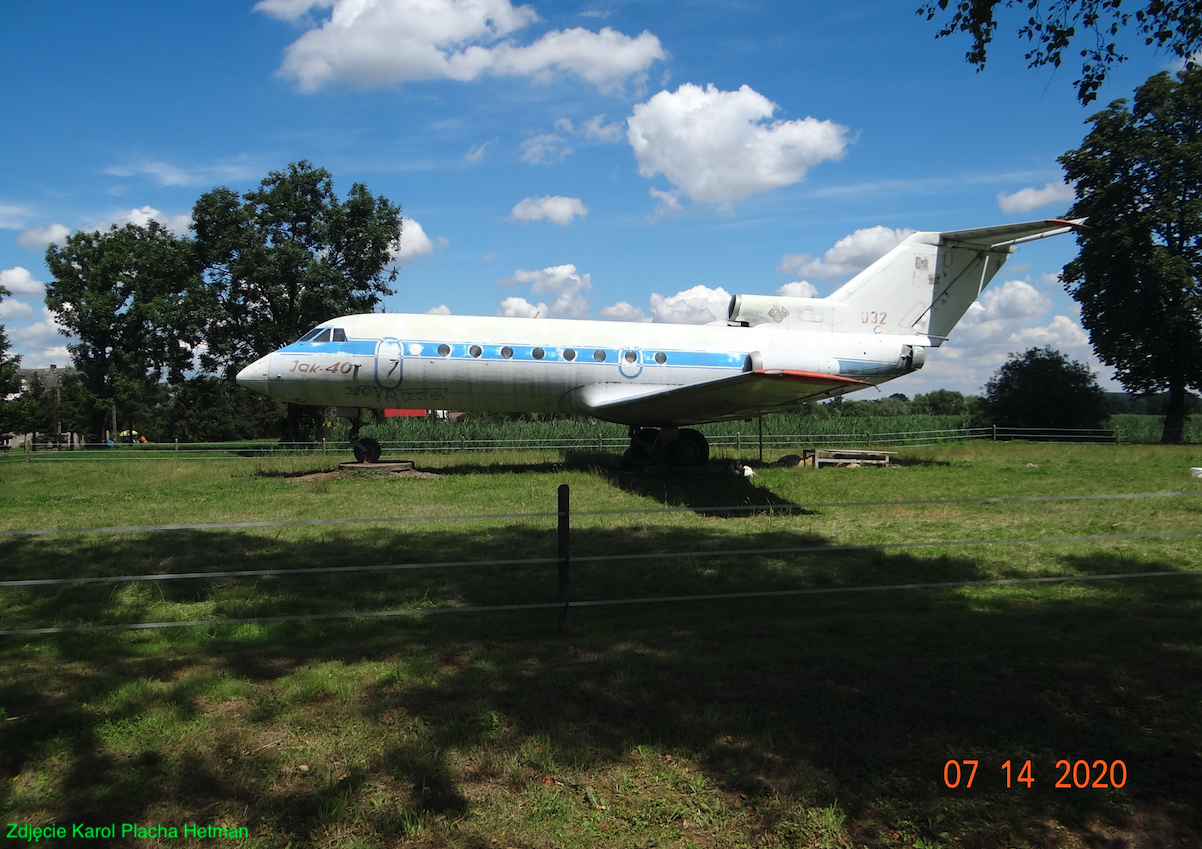
The city of Goleniow. 2009 year.
Goleniów is a city located on the Goleniów Plain, which is part of the Szczecin Coast. The city is located on the edge of the Goleniowska Forest. One of the longest rivers of Western Pomerania flows through the village, the Ina, and the rivers Wiśniówka and Struga Goleniowska flowing into it. The city is located only 15 km from the Oder River, which is connected by the Ina River. The distance to the Baltic Sea in a straight line is about 50 km. The city is located at an altitude of 15 m above sea level. Contrary to appearances, Goleniów is not a small town. In 2007, the population was 22,440; including children and youth 4,293 inhabitants, people of working age 14,969 and elderly people 3,178.
The city is located at the former intersection of National Roads No. 3 and No. 6. In the 1980s, the western bypass of Goleniów was built (road No. 3), and in the 1990s the northern bypass (road No. 6). Currently, the construction of an eastern bypass is planned. The construction of bypasses significantly reduced the vehicular traffic in the city center and moved transport outside the urban areas. The city is connected with these routes by three collision-free exits. Convenient road connections make the city more attractive to investors and tourists. The Provincial Road No. 113 runs through the center of Goleniów, connecting Świąt with Maszewo and Łęczyca.
There is a railway station in the city, located on the railway line No. 401, connecting the port of Świnoujście with Szczecin and the south of the Republic of Poland. Outside the holiday season, one train of the Cheap Railway Lines stops here, providing a connection with Poznań, Warsaw and Kraków. Local trains run through the city from Szczecin to Świnoujście, Kamień Pomorski or Kołobrzeg and on the return route. In the early 1990s, the railway connection with Maszewo was closed. Currently, the track on which these trains ran has been dismantled, and a bicycle path runs in its place. Many freight trains also pass through the city. hard coal and fuels.
History of Goleniów Airport. 1957.
The decision to build the airport was made in 1952, when the war in Korea was reaching its apogee and the conflict between the USA and the CCCP was growing. And although our nation did not want war, it did not have much to say. The decision-making center was in the Moscow State Kremlin.
The facility is located among forests. The airport was designed in accordance with the then existing canons. One concrete RWY (RWY), 1,800 m long and 45 m wide. There is also a taxiway (taxiway) and individual aircraft stands, centered. The infrastructure was supplemented by a technical base and a fuel warehouse (MPS). Construction began in 1953 and was completed in 1956. The air traffic control tower and hangar were built later. Over time, a new MPS was also created. The barracks buildings are located among the trees in the south-eastern part of the complex.
The main supply of the airport was carried out by rail transport through the railway siding built on the south-eastern side, from the route No. 402 Goleniów-Nowogard. Railway line No. 402 is a route located in north-western Poland. It connects Koszalin with Goleniów via Kołobrzeg, Gryfice and Nowogard. Entirely located in the West Pomeranian Voivodeship. The line is single-track, electrified in 1988, only on the Koszalin-Kołobrzeg section. It is active throughout. There are passenger connections between Kołobrzeg by rail bus and Szczecin to the west, and by express trains, fast and passenger trains with Koszalin and Gdańsk to the east.
The officers' housing estate was located near the town of Marszewo, south of the airport. The settlement is called Mosty-Osiedle. Currently (2010) there are several blocks of flats there. Currently (2020) the estate is inhabited by about 250 people. The beginnings of the estate date back to the 1930s, when the Germans began to build a housing estate for employees of the armaments factory.
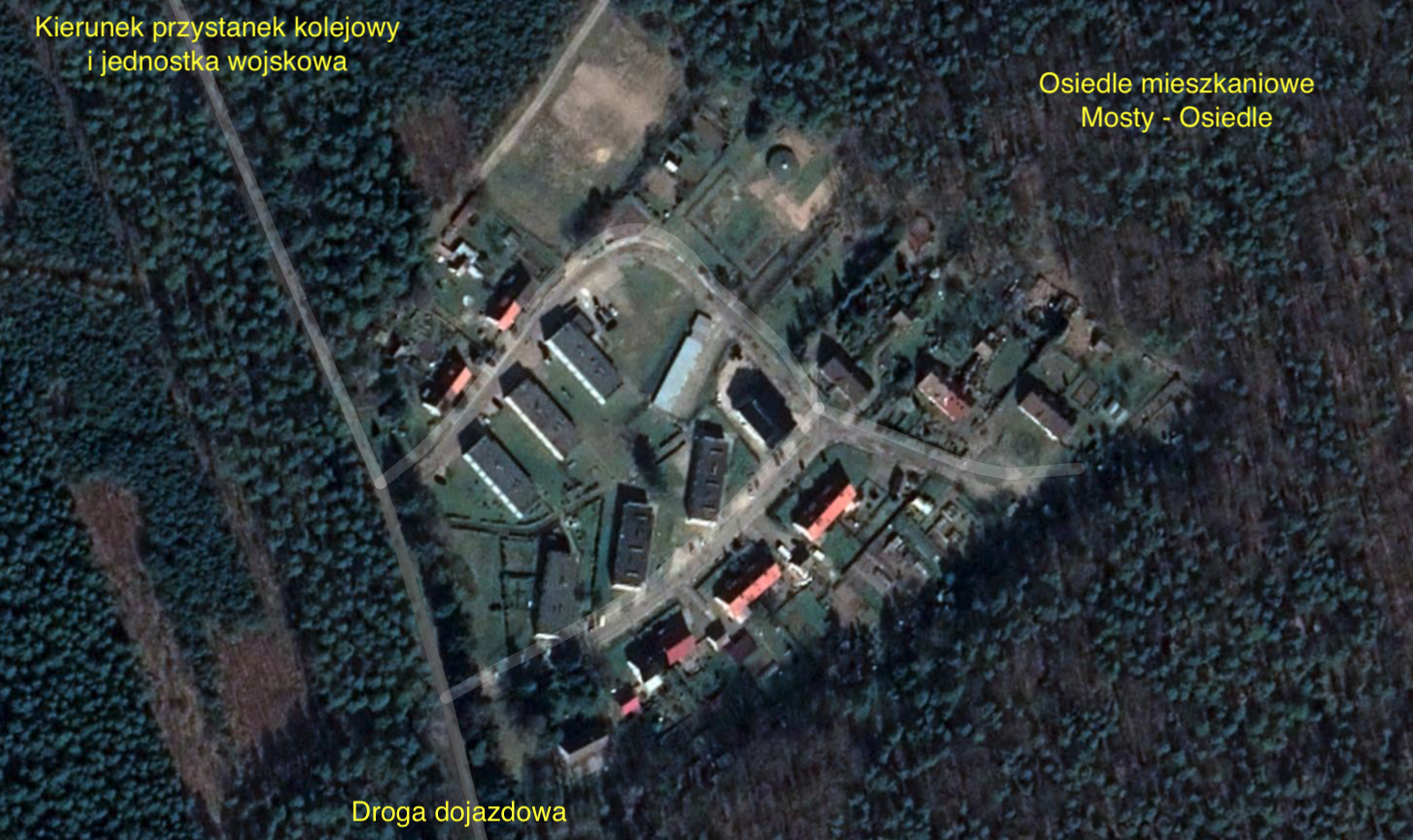
Aviation units at the Goleniów airport.
In 1956, a decision was made that the 4th PLSz "Kraków", previously based at the Bydgoszcz Airport, would be transferred to the new airport. In the literature, it is often stated that 2 PLM "Kraków" was redeployed to the Goleniów Airport. This is a mistake, but not so serious, because it is the same unit that has a pedigree derived from the 2nd PBN (Night Bombers Regiment), renamed the 4th PLSz, and then after subsequent changes to the 2nd PLM "Kraków" . In addition, since there was practically no work on specialized attack aircraft in the CCCP, the Polish Assault Regiments received Lim-1/2 aircraft in place of the Il-10 assault aircraft in the mid-50s, i.e. they could perform hunting and assault tasks.
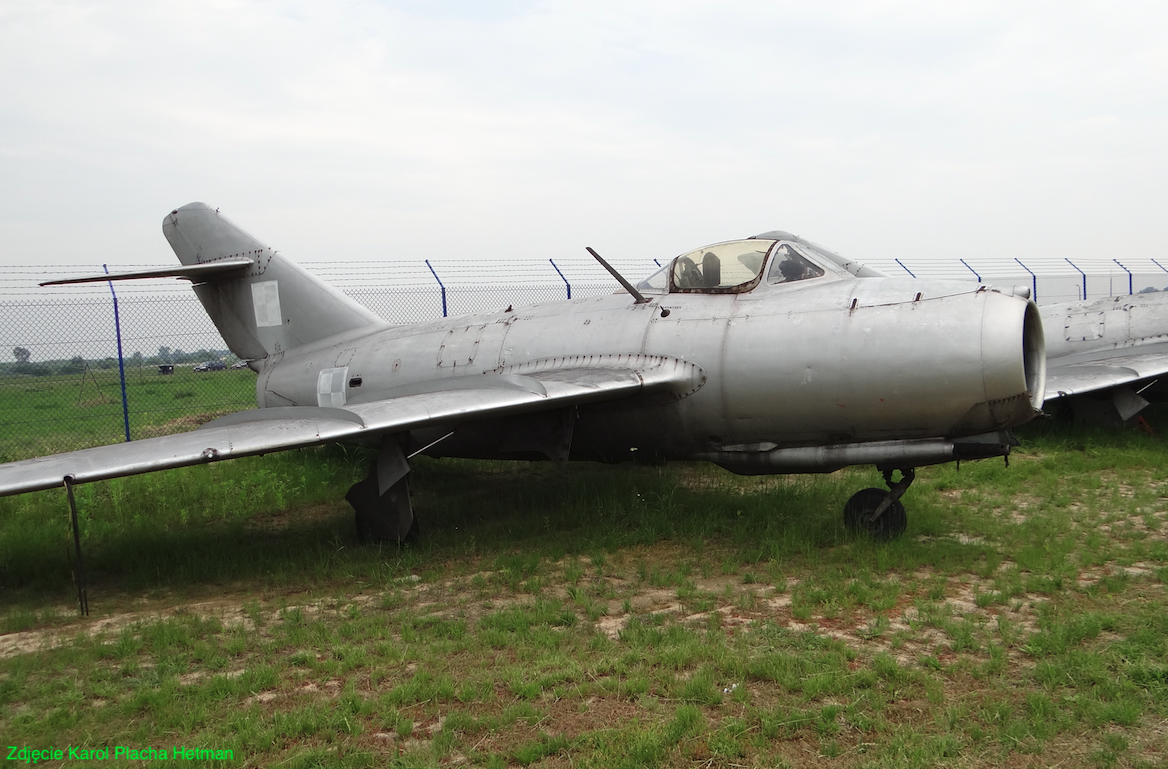
In 1957, the 4th PLSz was transferred from Bydgoszcz to the Goleniów Airport, where it was stationed until it was disbanded in January 1994. In 1957, the 4th PLSz adopted Polish-made aircraft of the PZL Lim-1/2 type. The introduction of these machines to the armament caused major changes in the Regiment. Training on turbojet aircraft has begun. The new equipment also made it possible to perform hunting tasks, so the regiment became a hunting-assault regiment, i.e. the 4th PLM-Sz "Kraków".
In 1960, the 4th PLM-Sz from Goleniów was directly subordinated to the 8th Fighter-Bomber Aviation Division in Bydgoszcz. The division, apart from the 4th PLM-Sz, consisted of regiments; 5. PLM-Sz in Bydgoszcz and 48. PLM-Sz in Inowrocław. In turn, the 8th DLM-Sz was subordinated to the Operational Aviation Command based in Poznań.
In the spring of 1960, the Regiment in Goleniów was equipped with the first Lim-5 fighters.
In 1963, there were further significant changes in the Regiment. Because the Regiment was selected for conversion to supersonic MiG-21 fighters and became the Fighter Aviation Regiment. This was followed by further organizational changes. The regiment was excluded from the structures of the 8th DLM-Sz, and was subordinated to the 5th BDLM (Brandenburg Fighter Aviation Division) in Świdwin. This division now has two hunting regiments, the 4th PLM Goleniów and the 40th PLM Świdwin.

From 1964, the regiment began intensive training of pilots and technical staff for Mikojan and Guriewicz MiG-21 aircraft. Officially, training began on April 1, 1965. The regiment became a precursor in the use of DOL (airport road sections) for the MiG-21. The first pilot who landed and took off with the MiG-21 on the road was Capt. pilot Zbigniew Biedrzycki.
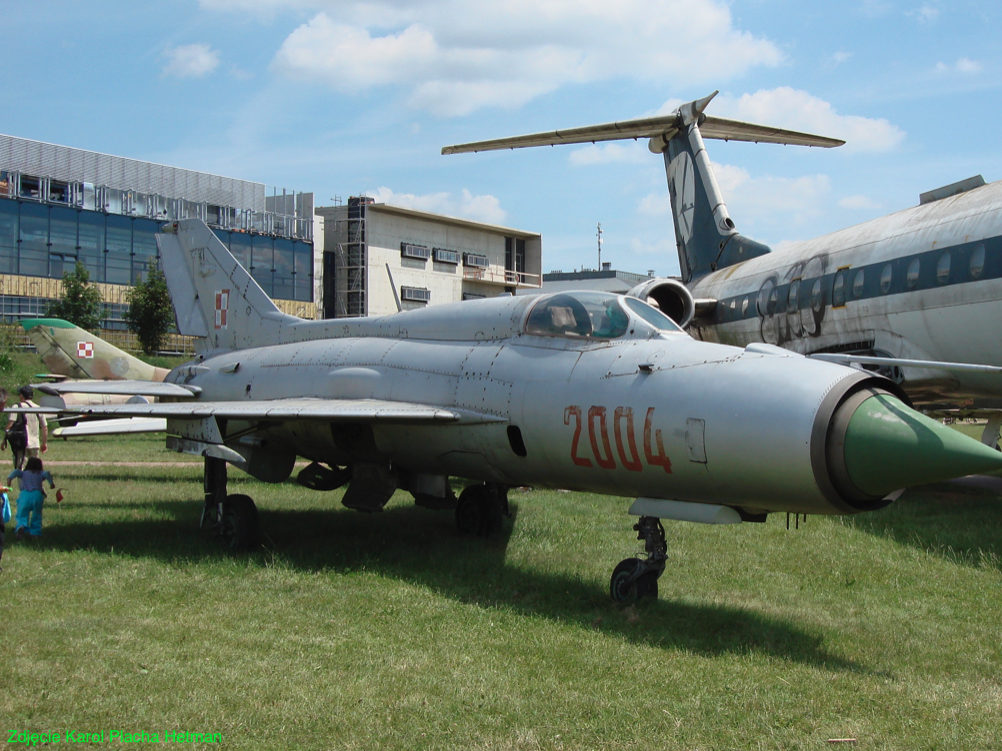
Around 1967, the basic type of aircraft in the regiment is of course the MiG-21 in the PF (about 5 pieces) and PFM (about 12 pieces) versions. But the regiment still had Polish Lim-2 / 5 (about 15 pieces).
In 1967, there was a correction in the organization of Operational Aviation. The 4th PLM received a new number and the proper name of the 2nd PLM "Kraków". This happened on the basis of Order No. 07/MON of the Minister of National Defense of May 4, 1967, on the transfer of historical names and numbers of frontline units to military units and the establishment of annual holidays of units. The regiment in Goleniów also took over the traditions of the disbanded 2nd PLM in Kraków-Czyżyny.
At the turn of 1966-1967, a decision was made to transfer civil passenger traffic to the Goleniów Airport from the Szczecin Dąbie Airport. But we wrote about civil aviation in Goleniów in the next article.
In 1971, the 5th Brandenburg Fighter Division was renamed the 3rd Brandenburg Assault and Reconnaissance Division. This happened on the basis of the order of the Chief of the General Staff No. 012/Org of March 6, 1971. At the same time, by order of the Chief of Staff of the Air Force No. 03 of March 27, 1971, the subordination of the regiments was changed. Therefore, the 3rd BDLSz-R received the 8th PLSz from Mirosławiec, the 32nd PLRTiA from Sochaczew. The 40th PLM remained, renamed the 40th PLSz and rearmed with attack aircraft. As a consequence, the 2nd PLM from Goleniów, left the structures of the 3rd BDLSz-R and since then is directly subordinated to Poznań, Operational Aviation. This organizational situation of the Regiment lasts the longest, until 1990.
In the period of 1976-1977, RWY was extended to 2,500 m. At the same time, the most modern airport in Poland was built at that time. The repairs of RWY and DK were carried out systematically every 4-5 years, and in 1998, the runway and the main apron were completely renovated, increasing their carrying capacity. In 1999, the electrical and power system supplying the airport equipment was reconstructed. At that time, a modern approach and RWY lighting system was installed.
Social and political changes in Poland in 1989 also had to lead to changes in the Polish Military Aviation. On the basis of the Order of the Ministry of National Defense of July 1, 1990, the Air Force, previously known as Operational Aviation, was merged with the National Air Defense Forces. This is how the Air Force and Air Defense Forces were created. The aviation units were grouped in four corps, and the 2nd PLM "Kraków" went to the 2nd Air Defense Corps, with the Headquarters and Command in Bydgoszcz. At that time, the Regiment had 24 MiG-21 M / MF and 5 MiG-21 UM in stock.
But the liquidation of the 2nd PLM was rather a foregone conclusion. The reduction of armament, and above all the lack of prospects for new equipment, had to lead to the disbanding of the unit. By order of the commander of the Air Force and Air Defense No. 90 of September 23, 1993 and the order of the commander of the 2nd KOP No. 46 of October 12, 1993, the 2nd PLM "Kraków" was disbanded on December 31, 1993. On January 10, 1994, the last collection of the regiment took place. The aircraft in possession were transferred to other air regiments, including the 1st PLM "Warszawa". The last planes left in September 1994.
On the 10th anniversary of the departure of the last planes from the regiment in Goleniów, a collection of former professional staff was organized and a commemorative plaque was unveiled on the wall of the newly built airport.
Throughout its activity, the regiment was one of the leading units of the Polish Military Aviation. He was awarded (already in 1945) the Cross of the Order of Virtuti Militari V class and the Commander's Cross of the Order of Polonia Restituta (in 1975). "For merits for the Aeroclub", "Meritorious for aviation", 1st degree Honorary Badge for merits for PLL LOT.
The former cadre of the regiment and the inhabitants of Goleniów often recall the period of the 2nd PLM. On the premises of the JW, aviation memorabilia were exhibited in the Hall of Tradition. After the liquidation of JW, new premises were sought for souvenirs. As a result, in 2005, the memorabilia of the 2nd PLM was moved to one of the most valuable monuments of Goleniów, to Brama Wolińska. This facility houses the Tourist Information Point and the Hall of History of the City of Goleniów, and now, of course, the Hall of Remembrance of the 2nd PLM "Kraków". You can see here commemorative books, albums with hundreds of photos, clippings from magazines about the Regiment, its achievements and people, commemorative cups, models and several pieces of equipment and furnishings. The hall functions thanks to the kindness of the city authorities and the care of the people working here.
Written by Karol Placha Hetman
